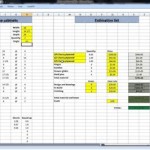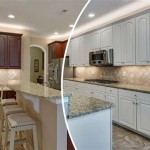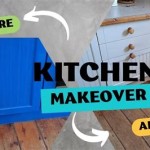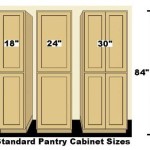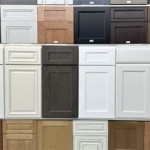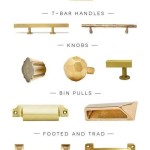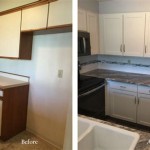What Colour Goes With Blue Kitchen Units? A Comprehensive Guide
Blue kitchen units have surged in popularity, offering a refreshing alternative to traditional white or wooden cabinetry. This versatile color evokes feelings of tranquility, stability, and sophistication. However, selecting complementary colors to pair with blue kitchen units is crucial for creating a cohesive and aesthetically pleasing space. The success of a blue kitchen design hinges on understanding the nuances of color theory and how different shades interact with one another. This article provides a thorough examination of the best color pairings for blue kitchen units, considering various design styles and practical implications.
Understanding the Undertones of Blue
Before delving into specific color pairings, it is essential to understand the undertones within the blue hue itself. Blue is not a monolithic color; it encompasses a wide spectrum of shades, each with its own distinctive characteristics. Certain blues may lean towards green (teal or turquoise), while others exhibit hints of purple (navy or indigo). The undertone significantly influences the colors that will harmonize effectively. For instance, a blue with green undertones will naturally complement greens and yellows, whereas a blue with purple undertones pairs well with purples and grays. A careful assessment of the specific blue shade used in the kitchen units will inform the subsequent color decisions.
The lightness or darkness of the blue also plays a pivotal role. Light blues, such as powder blue or sky blue, create an airy and open atmosphere, often lending themselves to coastal or cottage-style kitchens. Dark blues, such as navy blue or cobalt blue, exude a sense of drama and sophistication, frequently found in modern or contemporary designs. The chosen lightness or darkness dictates the level of contrast needed in the surrounding colors to achieve balance and visual appeal.
Furthermore, consider the existing lighting conditions in the kitchen. Natural light tends to enhance the vibrancy of colors, while artificial light can alter their appearance. The interplay between the blue units and the available light will affect the overall perception of the kitchen space. It is advisable to test paint samples under different lighting conditions before committing to a final color scheme.
Classic and Timeless Color Combinations
For those seeking a timeless and elegant aesthetic, certain color combinations consistently prove successful when paired with blue kitchen units.
White: White is a perpetually popular choice for its ability to create a clean, bright, and spacious feel. Paired with blue kitchen units, white provides a crisp contrast that accentuates the blue's richness. White can be used for countertops, backsplashes, walls, and trim, creating a balanced and airy atmosphere. The specific shade of white can be adjusted to complement the blue; a warm white can soften cooler blues, while a cool white can enhance the vibrancy of warmer blues. Consider the texture of the white elements; a glossy white backsplash can create a modern look, while a matte white finish can lend a more rustic appeal.
Gray: Gray offers a sophisticated and versatile alternative to white. As a neutral color, gray allows the blue kitchen units to take center stage while providing a subtle and grounding backdrop. Light grays can create a serene and calming atmosphere, while darker grays can add depth and drama. The undertone of the gray is crucial; a gray with warm undertones (greige) can soften cooler blues, while a gray with cool undertones can enhance the modern feel of a blue kitchen. Gray can be incorporated through countertops, backsplashes, walls, or even flooring, depending on the desired level of contrast and visual interest.
Wood Tones: Natural wood tones introduce warmth and organic texture into a blue kitchen. The combination of wood and blue creates a balanced and inviting atmosphere, suitable for both modern and traditional designs. Light wood tones, such as maple or birch, create a bright and airy feel, while dark wood tones, such as walnut or cherry, add richness and sophistication. Wood can be incorporated through countertops, flooring, open shelving, or even butcher block islands. The grain pattern and finish of the wood will further influence the overall aesthetic, with smoother finishes lending a more modern appearance and more textured finishes contributing to a rustic charm.
Exploring Bold and Contemporary Color Palettes
For those seeking a more adventurous and contemporary kitchen design, several bold color palettes can complement blue kitchen units effectively.
Yellow: Yellow provides a vibrant and cheerful contrast to blue, creating a dynamic and energetic atmosphere. The complementary nature of blue and yellow ensures a visually engaging combination. However, moderation is key; too much yellow can overwhelm the space. Incorporating yellow as an accent color, through accessories, textiles, or a feature wall, can add a pop of energy without becoming overpowering. The specific shade of yellow should be carefully considered; a muted mustard yellow can create a sophisticated and retro vibe, while a bright lemon yellow can add a playful and modern touch. Consider the intensity of the blue; darker blues can handle bolder yellows, while lighter blues benefit from softer yellow hues.
Orange: Similar to yellow, orange offers a warm and energizing contrast to blue. This combination is particularly effective in creating a vibrant and welcoming kitchen space. The shade of orange should be carefully selected to complement the blue; a burnt orange can create a rustic and earthy feel, while a coral orange can add a touch of sophistication and glamour. Orange can be incorporated through accessories, artwork, or even a painted kitchen island. Consider using orange sparingly to avoid overwhelming the space; a few strategically placed accents can be highly effective in creating a visually engaging kitchen. The warmth of orange can help balance the coolness of blue, creating a harmonious and inviting atmosphere.
Green: Green, particularly shades with blue undertones, creates a harmonious and nature-inspired palette. Combining blues and greens can evoke a sense of tranquility and calm, reminiscent of natural landscapes. The specific shades of green and blue should be carefully chosen to ensure a cohesive look; a teal or turquoise green can complement a navy blue, while a sage green can soften a lighter blue. Green can be incorporated through plants, backsplashes, or even painted walls. The use of natural materials, such as wood or stone, can further enhance the organic feel of this color combination.
Practical Considerations for Combining Colors
Beyond aesthetic considerations, practical factors should influence the color selection process for a blue kitchen. The size and layout of the kitchen, the amount of natural light, and the desired functionality all play a role in determining the most suitable color combinations.
Small Kitchens: In smaller kitchens, it is crucial to maximize the sense of space and light. Lighter colors, such as white, light gray, or pale wood tones, are ideal for creating an airy and open atmosphere. Darker colors can make a small kitchen feel cramped and claustrophobic. If incorporating darker blues, consider using them as accents rather than the primary color for the units. Reflective surfaces, such as glossy backsplashes or metallic hardware, can help to bounce light around the room and enhance the sense of spaciousness.
Large Kitchens: In larger kitchens, there is more freedom to experiment with bolder colors and contrasting combinations. Darker blues can be used more liberally, creating a dramatic and sophisticated look. However, it is still important to maintain balance and avoid overwhelming the space. Break up large expanses of color with contrasting accents, such as a lighter countertop or a colorful backsplash. Consider using different textures to add visual interest and depth to the design.
Countertop Materials: The choice of countertop material also influences the overall color scheme. Quartz countertops are available in a wide range of colors and patterns, allowing for seamless integration with blue kitchen units. Granite countertops offer a more natural and textured look, with varying shades of gray, brown, and black. Wood countertops add warmth and organic texture to the kitchen, complementing blue units beautifully. Consider the durability and maintenance requirements of each material before making a final decision.
Hardware Finishes: The hardware finishes, such as cabinet pulls and knobs, can also influence the overall aesthetic. Metallic finishes, such as brushed nickel, chrome, or brass, can add a touch of elegance and sophistication. Matte black hardware offers a modern and industrial look. The choice of hardware finish should complement the overall color scheme and design style of the kitchen. Consider the size and shape of the hardware to ensure that it is both functional and aesthetically pleasing.
In conclusion, determining which color complements blue kitchen units involves careful consideration of various factors, including the undertones of the blue hue, the desired design style, and practical implications for the kitchen space. By understanding the principles of color theory and considering the specific characteristics of the kitchen, individuals can create a harmonious and visually appealing environment that reflects their personal taste and lifestyle.

20 Blue Kitchen Cabinet Ideas Light And Dark Paint Colors

Blue Kitchen Ideas For Your Home Designcafe

Some People May Find It Unusual To Use Blue As Kitchen Color But You Ll Be Amazed With This C Interior Home Kitchens Designs

25 Charming Blue Kitchen Cabinet Ideas

8 Flooring Ideas To Team With Your Dark Blue Kitchen Houzz Ie

Best Kitchens In Classic Blue Try Out The Trendiest Color Many Tones Decoist

Blue Kitchen Ideas For Your Home Designcafe

Navy Blue Kitchen Home Bunch Interior Design Ideas

15 Blue Kitchen Design Ideas Walls

Navy Blue Kitchen Ideas Kettle Co
Related Posts

